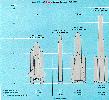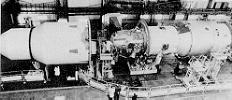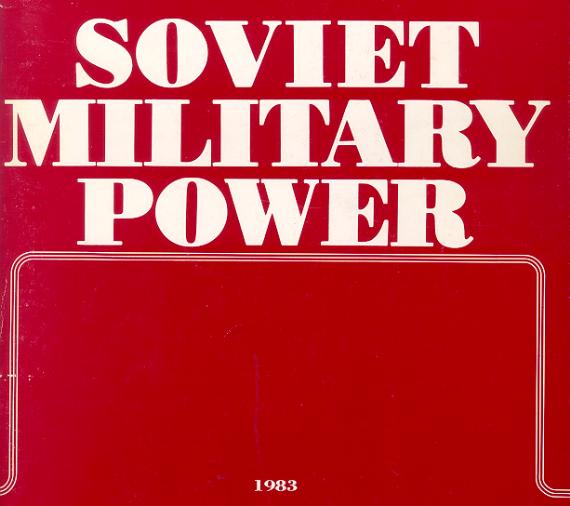CHAPTER IV - SOVIET SPACE SYSTEMS
The Soviet quest for military supremacy has expanded into space. With the development and employment of an orbital antisatellite (ASAT) weapon over a decade ago, the Soviet Union clearly signaled its recognition of space as an arena in which to conduct war.
In the past ten years, the USSR has been launching more than 75 spacecraft per year, a rate of four-to-five times that of the United States. Over the past few years, the rate has been close to 100 annually. The annual payload weight placed into orbit by the Soviets is evermore impressive - 660,000 pounds - ten times that of the United States. This level of effort reflects the importance the Soviets attach to their space programs; it also reflects some technological weakness in the areas of longevity and flexibility. Soviet military and military related space programs range from extended manned missions, to meteorological, communications, navigational, reconnaissance, surveillance, targeting and antisatellite missions. The magnitude of the Soviet space program comes into even clearer focus with the realization that the USSR currently has under development a heavy-lift space launch system, comparable to the US SATURN V, that will be able to place payloads at least six.to seven times the weight of those of the US space shuttle into orbit.
Since the USSR's successful launch of SPUTNIK 1 in 1957, the Soviets have pursued a vigorous, deliberate and methodical program to exploit space for military purposes. The initial Soviet use of space for military applications occurred in 1961 with the launch of their first photographic reconnaissance satellite. Throughout the 1960s and 1970s, Soviet military space programs expanded in both scope and numbers. By the advent of the space shuttle era, these programs had developed into mature, integrated systems for the direct and indirect support of Soviet military forces, and with the capability to threaten low-altitude US and allied satellites.
The military, political, and economic value of Soviet space programs dictates that general control and direction of the Soviet space effort rest with the Politburo. The fundamental decisions for military space system research, design, development, testing, and production at the national level are made in the Soviet Defense Council. Both of these organs are headed by General Secretary Andropov. Actual program management, however, is overseen by the Military Industrial Commission, which reports directly to the Council of Ministers. All five components of the Armed Forces take part in the development and operation of the Soviet space program. The Strategic Rocket Forces provide the launch and tracking support.
The USSR has invested heavily in three extensive space assembly and launch complexes at Tyuratum, Plesetsk and Kapustin Yar. Each of these complexes is protected from external attack by surrounding networks of air defense, including manned interceptor bases and surface-to-air missile complexes. New launch facilities are being built at Tyuratam to handle the newest generation of Soviet heavy-lift space boosters that will move from the developmental to the operational stage in the second half of this decade. These boosters include one in the SATURN V class, another somewhat smaller expendable booster and a reusable system similar to the US shuttle. Additional developments include newer spacecraft with greater flexibility; upgrading of command, control and tracking sites; upgrading of ships dedicated to supporting space activities and expansion of production, research, development and test facilities.
On any given day, 70-110 Soviet satellites are in orbit, more than half of which serve military purposes solely. Some 85 percent of all Soviet space launches are exclusively military or joint military/civilian missions. The resources required to sustain this effort are enormous. The Soviet space program in the past has relied heavily on modified ballistic missiles for space system boosters. Eleven of 14 launch systems successfully flown by the Soviets have used stages from ballistic missiles. The two new expendable systems expected to have their first flights in the 1984-87 time period have been designed from the ground up as space systems.In keeping with past Soviet practice, several versions of each of these systems will probably be developed to support many different space missions.
Current evidence indicates that the Soviets are developing a reuseable space system, similar to the US space shuttle and a smaller space plane. Orbital developmental test flights of the smaller vehicle have already occurred. These systems could be in regular use within a decade and will further expand the military flexibility and capability of the Soviet space effort.
 Soviet
manned space missions are becoming increasingly complex and constitute
the single most extensive element of the Soviet space program. After
accomplishing many firsts in the early 1960s, including the first man
in space, the Soviet manned program was overshadowed by the US manned
program during the late 1960s. Since 1971, the Soviets have placed
seven space stations in orbit. Indeed, there was not one US manned
space mission from 1975 to 1981. The first SALYUT-I manned space
station was launched in 1971. A second type of SALYUT station was
launched in 1973. Both were capable of conducting military research. In
1977, the Soviets launched SALYUT-6, a small space station complex,
which had a second docking collar to accommodate the PROGRESS cargo
vehicle and the SOYUZ cosmonaut ferry. These features provided the
Soviets with the capability to resupply and exchange personnel on their
SALYUT space stations. On three occasions the Soviets have conducted
manned missions lasting as long as six months, with the longest mission
211 days, almost three times greater than the longest, 84-day, manned
US mission in 1974. Soviet cosmonauts have amassed twice as many
man-hours in space as US astronauts.
Soviet
manned space missions are becoming increasingly complex and constitute
the single most extensive element of the Soviet space program. After
accomplishing many firsts in the early 1960s, including the first man
in space, the Soviet manned program was overshadowed by the US manned
program during the late 1960s. Since 1971, the Soviets have placed
seven space stations in orbit. Indeed, there was not one US manned
space mission from 1975 to 1981. The first SALYUT-I manned space
station was launched in 1971. A second type of SALYUT station was
launched in 1973. Both were capable of conducting military research. In
1977, the Soviets launched SALYUT-6, a small space station complex,
which had a second docking collar to accommodate the PROGRESS cargo
vehicle and the SOYUZ cosmonaut ferry. These features provided the
Soviets with the capability to resupply and exchange personnel on their
SALYUT space stations. On three occasions the Soviets have conducted
manned missions lasting as long as six months, with the longest mission
211 days, almost three times greater than the longest, 84-day, manned
US mission in 1974. Soviet cosmonauts have amassed twice as many
man-hours in space as US astronauts.
 The
Soviet commitment to their manned space program is growing. The
development of a large manned space station by about 1990 to maintain a
military presence in space is one of the goals of the new heavy-lift
launcher systems now in development. In addition to space stations
expected by 1990, the Soviets will use the heavy-lift space boosters to
orbit even larger space stations and space modules before the end of
the century. Such space stations could weigh more than 100 tons and be
able to support a large crew for extended periods without
replenishment.
The
Soviet commitment to their manned space program is growing. The
development of a large manned space station by about 1990 to maintain a
military presence in space is one of the goals of the new heavy-lift
launcher systems now in development. In addition to space stations
expected by 1990, the Soviets will use the heavy-lift space boosters to
orbit even larger space stations and space modules before the end of
the century. Such space stations could weigh more than 100 tons and be
able to support a large crew for extended periods without
replenishment.
The USSR's introduction, application and known future development of space weapon systems point to a coordinated program involving:
- the present generation of antisatellite vehicles, now operational and designed to destroy low-orbiting satellites,
- a very large, directed energy research program including the development of laser-beam weapons systems which could be based either in the USSR, aboard the next generation of Soviet ASATs or aboard the next generation of Soviet manned space stations.
The ASAT system, which is now operational, has the capability to seek and destroy US space systems in near-earth orbit. The Soviets conduct yearly tests to practice satellite interception and to refine the ASAT system. One direction of the Soviet Union's space weapons program is toward the development and deployment of a space-based laser system. The Soviets could launch the first prototype of a space-based laser antisatellite system in the late 1980s or very early 1990s. An operational system capable of attacking other satellites within a few thousand kilometers range could be established in the early 1990s. Space-based ABM systems could be tested in the 1990s, but probably would not be operational until the turn of the century.
The Soviets have steadily increased their space photographic and electronic reconnaissance effort since the early 1960s. Each year over 50 of these satellites are launched to support military forces on a daily basis. The several different satellite systems in use provide target location, target identification and characterization, order-of-battle, force monitoring, crisis monitoring and situation assessment, geodetic information for ICBM targeting and mapping for military forces.
The Soviet military space program also reflects an ever-increasing use of space for world wide surveillance and warning. The Soviets have brought a number of US and Allied military forces under surveillance by these space based systems. The surveillance satellites include an ICBM launch detection system and ocean surveillance systems, such as the two RORSAT satellites with nuclear-powered generators that caused world wide alerts during their breakup and reentries to earth in 1978 and early 1983. Soviet efforts in the surveillance field are expected to lead to a multi-satellite detection, surveillance and attack-warning system against strategic and non-strategic ballistic missiles and possibly bombers, as well.
The Soviets are increasing their use of space systems for command, control, and communications. Since the mid-1960s when the first Soviet MOLNIYA communications satellite was launched, the USSR has continued to improve and expand its communications satellite programs to support its political leadership and its military, diplomatic and intelligence missions.
 The
Soviets are emphasizing the development of communications networks
using satellite systems that will be placed in geostationary orbits.
Currently, the geostationary satellites - GORIZONT, RADUGA, and EKRANs
- occupy orbits with the announced function of fulfilling part of the
Soviet domestic and international communications requirements. These
satellites could also provide military communications to ground, sea
and air elements of the Soviet Armed Forces.
The
Soviets are emphasizing the development of communications networks
using satellite systems that will be placed in geostationary orbits.
Currently, the geostationary satellites - GORIZONT, RADUGA, and EKRANs
- occupy orbits with the announced function of fulfilling part of the
Soviet domestic and international communications requirements. These
satellites could also provide military communications to ground, sea
and air elements of the Soviet Armed Forces.
The Soviets have embarked on an ambitious expansion of their communication satellite program that will add measureably to their global command, control and communications capability. Over the next ten years, the Soviets will develop and deploy an even more advanced series of communication satellites, some of which might relay transmissions from manned orbital command and control platforms.


